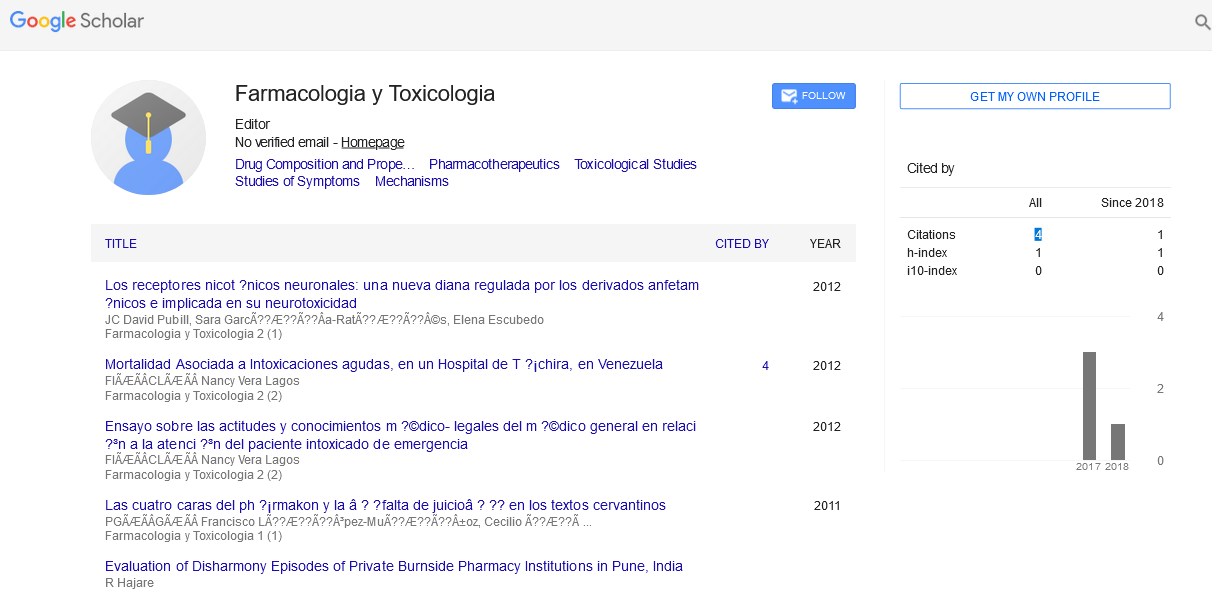Perspective - (2024) Volume 14, Issue 6
Therapeutic Window: Balancing Efficacy and Safety in Drug Dosing
Udo Bonnet*
Department of Pharmacology, University of Afeiea, Talisay, Nigeria
*Correspondence:
Udo Bonnet, Department of Pharmacology, University of Afeiea, Talisay,
Nigeria,
Email:
Received: 07-Aug-2024, Manuscript No. IPFT-24-15144;
Editor assigned: 12-Aug-2024, Pre QC No. IPFT-24-15144 (PQ);
Reviewed: 26-Aug-2024, QC No. IPFT-24-15144;
Revised: 02-Dec-2024, Manuscript No. IPFT-24-15144 (R);
Published:
30-Dec-2024
Introduction
In the realm of pharmacology, the therapeutic window
represents a crucial concept in optimizing drug therapy. It
delineates the range of drug doses that produce a desired
therapeutic response while minimizing the risk of adverse
effects. This balance between efficacy and safety is essential for
effective medical treatment and patient well-being. This article
explores the therapeutic window's definition, significance,
factors influencing it and its practical applications in drug
therapy.
Description
Defining the therapeutic window
The therapeutic window, also known as the therapeutic range
or index, refers to the dosage range of a medication that
achieves the intended therapeutic effect without inducing
significant adverse effects. It is a fundamental parameter in
pharmacology that ensures drugs are administered at doses that
maximize benefits while minimizing potential harm.
Significance of the therapeutic window
Optimizing drug efficacy: The primary goal of drug therapy is
to achieve the desired therapeutic effect, whether it's pain
relief, infection control or blood pressure regulation. The
therapeutic window provides a guideline for selecting doses that
are effective for the majority of patients. Administering a drug
within this range ensures that therapeutic goals are met without
unnecessary escalation of doses.
Minimizing adverse effects: Every drug has the potential to
cause side effects, which may range from mild to severe. The
therapeutic window helps clinicians avoid doses that exceed the
safe limit, reducing the risk of adverse reactions. By staying
within this window, healthcare providers can better manage the
risk-benefit ratio of a medication.
Personalized medicine: The therapeutic window is not a onesize-
fits-all parameter. Individual variations in genetics,
metabolism and health status can affect how a drug is processed
and how it affects the body. Personalized medicine aims to tailor
drug dosing to the individual, taking into account these
variations to optimize therapeutic outcomes and minimize risks.
Factors in luencing the therapeutic window
Several factors can influence the size and position of the
therapeutic window for a particular drug. These factors include:
Pharmacokinetics: The absorption, distribution, metabolism
and excretion of a drug play a significant role in determining its
therapeutic window. Variations in these processes can affect
drug levels in the body and influence the therapeutic range. For
example, a drug with a narrow therapeutic window may require
precise dosing and frequent monitoring.
Pharmacodynamics: Differences in how individuals respond
to drugs can impact the therapeutic window. Pharmacodynamic
factors, such as receptor sensitivity and drug interactions, can
alter the drug's efficacy and safety profile.
Drug interactions: Concurrent use of multiple medications
can affect the therapeutic window. Drug interactions may
enhance or diminish the effects of one or both drugs, potentially
shifting the therapeutic range. Clinicians must be aware of
potential interactions and adjust dosing accordingly.
Genetic variability: Genetic differences among individuals can
influence drug metabolism and response. Variants in drugmetabolizing
enzymes or drug transporters can affect the
therapeutic window, leading to variations in drug efficacy and
toxicity.
Practical applications of the therapeutic window
Drug development: During the drug development process,
researchers conduct studies to determine the therapeutic
window of new medications. These studies involve assessing the
dose-response relationship and identifying the range of doses
that provide the desired therapeutic effect while avoiding
toxicity.
Clinical practice: In clinical practice, healthcare providers use
the therapeutic window to guide dosing decisions and monitor
patient responses. For drugs with a narrow therapeutic window,
such as anticoagulants or antiepileptics, regular monitoring of
drug levels and clinical response is essential to ensure patient
safety.
Dose adjustment: For patients who experience adverse
effects or inadequate therapeutic response, dose adjustments
may be necessary. Understanding the therapeutic window
allows healthcare providers to make informed decisions about
dose modifications and alternative therapies.
Patient education: Educating patients about their medications
and the importance of adhering to prescribed doses can improve
therapeutic outcomes. Patients should be informed about
potential side effects and the need to report any adverse
reactions promptly.
Challenges and considerations
While the therapeutic window is a valuable concept, it is not
without challenges. Some drugs have inherently narrow
therapeutic windows, requiring careful monitoring and precise
dosing. Additionally, variability among patients can make it
difficult to determine the optimal therapeutic range for
everyone.
Advancements in pharmacogenomics and personalized
medicine are helping to address these challenges by providing more tailored approaches to drug therapy. By considering
individual genetic profiles and other factors, healthcare
providers can better predict and manage the therapeutic
window for each patient.
Conclusion
The therapeutic window is a fundamental concept in
pharmacology that balances drug efficacy and safety. By
understanding and applying this concept, healthcare providers
can optimize drug therapy, reduce the risk of adverse effects and
improve patient outcomes. As medicine continues to evolve,
ongoing research and advancements in personalized medicine
will further refine our understanding of the therapeutic window,
leading to more effective and safer treatments for a wide range
of conditions.
Citation: Bonnet U (2024) Therapeutic Window: Balancing Efficacy and Safety in Drug Dosing. Farmacologia Toxicologia, Vol.14 No.6: 059





